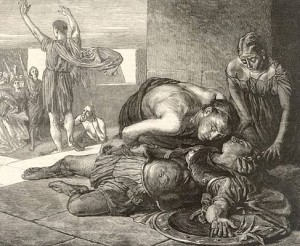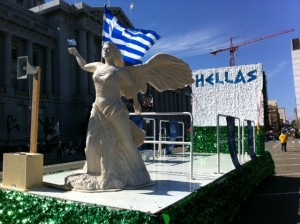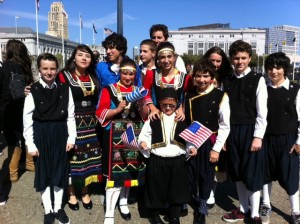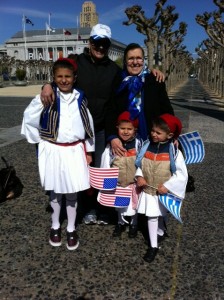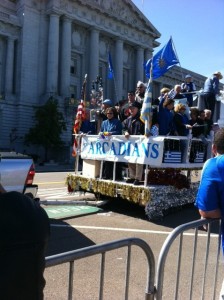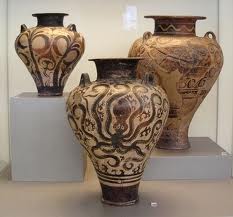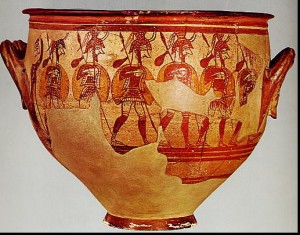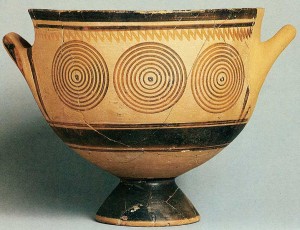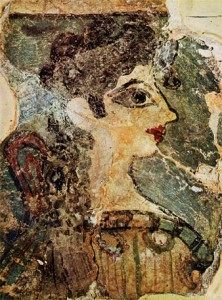Click here for direct link to audio podcast Episode #44.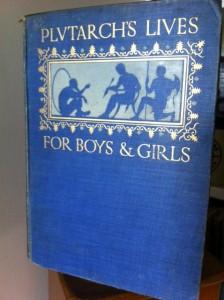
Click here for previous audio episodes.
As you know, one of my favorite things is to peruse the stacks of any used bookstore. Over many years I have acquired an amazing library, which allows me to take a book down from a shelf and answer any of my many questions in a matter of minutes. In fact, my library is now so large and specialized that I am considering dividing sections into historical periods to help with my research!
Today I read from a little treasure I found somewhere I can’t even recall, Plutarch’s Lives for Boys & Girls. Retold by W.H. Weston, and illustrated by W. Rainey, this book was published in London & Edinburgh. Like many old books prior to when society began to think of them as a commodity, it is without an ISBN (international standard book number) or publication date. It is safe to say this book is from the early 1900’s, when books for children were beginning to have real interest for writers and illustrators. One can easily think back to N.C. Wyeth, Howard Pyle, Walter Crane, and Kate Greenaway. This book has the same feel as a Howard Pyle adventure book. Beautifully bound, with high quality heavy paper, and words impressed into the surface by the printing press so that you can practically read them like braille. A lovely find! And to top it off, it is well-written and in the general tone of Plutarch, as they hadn’t yet started “dumbing down” the classics.
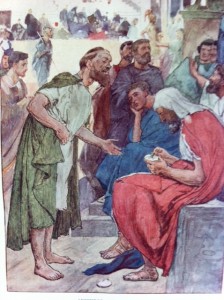 Having brought us through the Persian Wars, I thought it might be nice to take some time to learn about some of the main characters. Aristides is up to bat & later we’ll give equal time to his rival, Themistocles. Sit back and enjoy this first part of Plutarch’s life of Aristides! See if you can tell which scene is illustrated here.
Having brought us through the Persian Wars, I thought it might be nice to take some time to learn about some of the main characters. Aristides is up to bat & later we’ll give equal time to his rival, Themistocles. Sit back and enjoy this first part of Plutarch’s life of Aristides! See if you can tell which scene is illustrated here.








